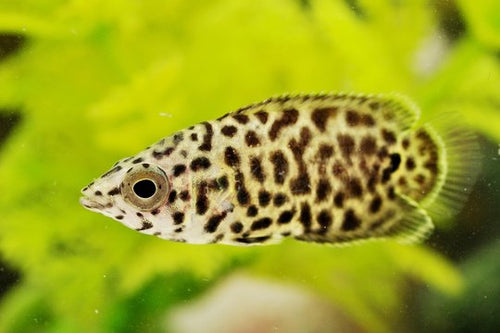Gourami-Spotted Climbing
Gourami-Spotted Climbing
check_circle Fast Shipping
check_circle Quality Products
check_circle Affordable Price
Reach out to us on ''available to order'' items via WhatsApp or email
Low stock: 4 left
Couldn't load pickup availability

Gourami-Spotted Climbing
package_2
Product Description
Product Description
All our fish, shrimp and corals are bagged with fresh oxygen as well as a heat pack in winter.
When ordering livestock please select the box size and add it to your cart for accurate overnight (1-2 days) shipping costs. A small box can take 1-2 bags and a medium box 6 bags. One bag fits max 10 small (1-3cm) fish or max 2 medium (3-5cm) fish or max 1 large (>5cm) fish.
ONE SPECIES PER BAG. Eg: One bag of 10 neon tetra.
Spotted Climbing Gourami (Trichopodus maculatus)
Description:
-
Appearance:
- Body: Elongated, laterally compressed body with a streamlined shape.
- Color: Typically a pale yellow or light brown with dark, irregular spots or speckles scattered across the body. These spots can be more prominent on the back and sides.
- Size: Grows up to 4-6 inches (10-15 cm) in length.
- Distinctive Feature: Known for its unique spotted pattern and its labyrinth organ, which allows it to breathe air.
-
Behavior:
- Activity: Generally peaceful and calm. Often found swimming in the middle to upper levels of the tank.
- Social Structure: Prefers to be kept in small groups or pairs. Males may exhibit some territorial behavior but usually do well if given enough space and hiding spots.
Care Requirements:
-
Tank Size:
- Minimum: 20 gallons (76 liters) for a small group. Larger tanks are preferable to provide ample space and reduce territorial conflicts.
-
Water Parameters:
- Temperature: 74-80°F (23-27°C). They thrive in a warm, stable environment.
- pH: 6.0-7.5. Slightly acidic to neutral water is ideal.
- Hardness: Soft to moderately hard water. They generally prefer softer water but can adapt to varying hardness levels.
- Filtration: Moderate filtration is adequate. They do not prefer strong currents, so a filter that provides gentle water movement is recommended.
-
Tank Setup:
- Substrate: Smooth gravel or sand. Avoid sharp or rough substrates that could damage their delicate fins.
- Aquascaping: Provide plenty of hiding spots and cover using live plants, driftwood, and rocks. They appreciate a well-planted tank with shaded areas and places to explore.
- Lighting: Low to moderate lighting is preferred. Maintain a regular light/dark cycle to simulate natural conditions.
-
Diet:
- Primary Food: Omnivorous; feed high-quality flakes or pellets formulated for tropical fish.
- Supplemental Food: Offer occasional live or frozen foods such as brine shrimp, bloodworms, and daphnia. A varied diet helps maintain their health and vibrancy.
-
Behavioral Considerations:
- Compatibility: Best kept with other peaceful fish. Avoid aggressive or overly large species that may stress them. Suitable tank mates include small, non-aggressive fish.
- Social Behavior: They do well in small groups and can be shy if kept alone. Providing plenty of hiding spots helps reduce stress and territorial disputes.
-
Tank Maintenance:
- Water Changes: Regular water changes (20-30% weekly) are important to maintain water quality and manage waste.
- Cleaning: Clean the tank regularly, including removing uneaten food and waste. Ensure the filtration system is functioning properly and does not create strong currents.
-
Health Care:
- Observation: Monitor for signs of stress or illness, such as changes in behavior, loss of appetite, or visible symptoms like discoloration or fin damage.
- Treatment: Maintain optimal water conditions and consult an aquarium professional if health issues arise. Common problems include fin rot and fungal infections. Early detection and prompt treatment are essential.


